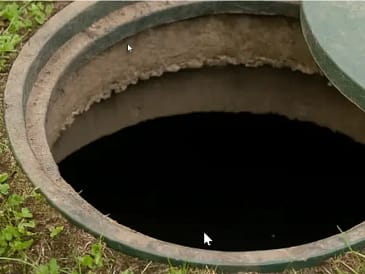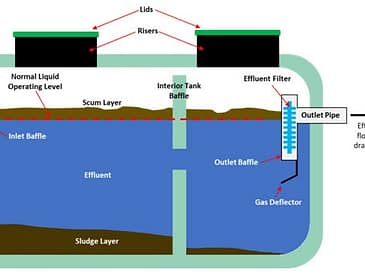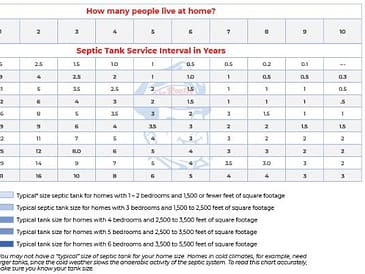Septic Tank Filters: Why Effluent Filters Matter More Than You Think
Septic tank filters—often overlooked, rarely discussed—are one of the most vital components of a healthy, long-lasting septic system. By trapping solids before they enter the drain field, these simple yet effective devices can prevent costly repairs, extend system lifespan, and improve wastewater treatment quality. Let’s explore how effluent filters work, where they’re installed, and why every septic tank should have one in 2025.
What Is a Septic Tank Filter and What Does It Do?
A septic tank filter, often called an effluent filter, is a specialized device installed in the outlet tee of your septic tank. Its job? To block suspended solids from escaping the tank and clogging your drain field or leach lines. By capturing organic debris and fine particles, the filter helps ensure that only properly settled wastewater reaches the soil treatment area.
“Effluent filters are one of the most cost-effective upgrades for extending the life of your septic system.” — Thomas Hensley, Certified Septic System Inspector
- Traps solids before they enter the drain field
- Improves wastewater quality and filtration
- Reduces risk of drain field clogs and failures
Understanding Inlet and Outlet Tees
Inlet and outlet tees, or baffles, are located at either end of your septic tank. The inlet tee directs sewage downward into the tank, allowing solids to settle. The outlet tee (where the effluent filter sits) prevents floating solids from escaping into the soil absorption area. These tees are crucial for maintaining separation between the scum, liquid, and sludge layers.
“Proper baffle design minimizes turbulence and keeps scum and sludge where they belong—in the tank.” — Rachel Mendez, Environmental Health Specialist
- Inlet baffles guide flow to prevent surface scum disturbance
- Outlet baffles keep solids from leaving with the effluent
- Effluent filters enhance the outlet tee’s function
 Layers of the Septic Tank: Why Filters Are Essential
Layers of the Septic Tank: Why Filters Are Essential
Inside the septic tank, waste naturally separates into three layers:
- Scum layer: Light materials like oils and grease float at the top
- Effluent (liquid) layer: The middle layer, made of clarified wastewater
- Sludge layer: Heavy solids settle at the bottom
As bacteria break down solids, the liquid in the middle flows out to the drain field. Without a filter, suspended solids can migrate into this effluent stream—eventually clogging soil pores and shortening the life of the drain field.
“Once solids reach the soil absorption area, you’re in for major headaches. Effluent filters are your first line of defense.” — Marcus Doyle, Drain Field Repair Technician
Types of Septic Tank Filters and Filter Media
Effluent filters vary in design, but most use mechanical filtration to trap solids. Some combine this with biological or chemical media for advanced treatment. Common types include:
- Foam pad filters: Reusable, easy to clean
- Slotted plastic cartridges: Durable, with horizontal filtration slots
- Multi-media filters: Combine gravel, activated carbon, or zeolite for advanced purification
Filters are usually installed in the second compartment of a two-chamber tank. Many come with gas deflectors or anti-clog caps to enhance performance.
“Think of your effluent filter like an air filter for your car—it needs to be maintained regularly to keep everything running smoothly.” — Ellie Clark, Septic Maintenance Professional
Proper Maintenance: Keep Your Filter Working
A septic tank filter is only effective if it’s cleaned on a regular schedule. During routine tank pumping (every 3–5 years), your technician should inspect and clean or replace the filter. Some filters can be removed and rinsed; others require replacement.
Warning Signs of a Dirty or Clogged Filter:
- Slow draining sinks or toilets
- Gurgling sounds in plumbing
- Frequent sewage backups
- Alarms on your septic system control panel
“A clogged filter can mimic the symptoms of a failing system—always check the filter first.” — Laura Gibbons, Emergency Septic Response Lead
When to Call a Professional
- During your scheduled tank pumping appointment
- If you experience persistent drain backups
- Before installing or replacing a filter system
- When buying or selling a home with a septic system
“Effluent filters are easy to overlook—but ignoring them can lead to complete drain field failure. Let a pro inspect it annually.” — Gary Matthews, Licensed Septic Contractor
Conclusion
Effluent filters are small but powerful tools in the fight against septic system failure. Easy to install and affordable, they significantly improve wastewater quality, protect the drain field, and reduce long-term maintenance costs. If your system doesn’t have one, now is the time to ask your septic technician about adding a filter—and if it does, be sure to maintain it. For expert filter cleaning, inspections, and septic system service, contact Septic Service Center today.

 Layers of the Septic Tank: Why Filters Are Essential
Layers of the Septic Tank: Why Filters Are Essential



